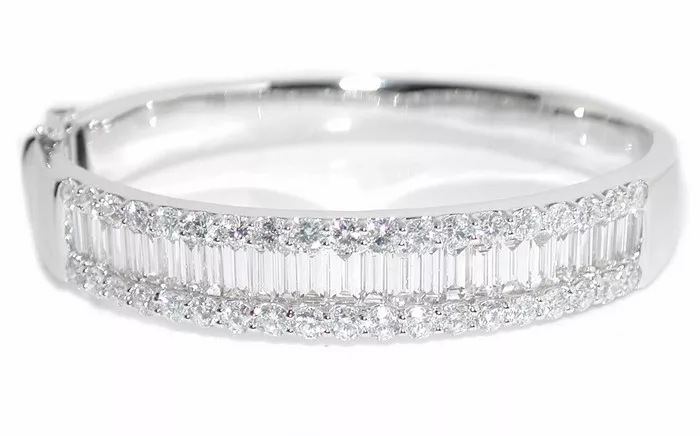Diamonds have captivated humanity for centuries with their unparalleled brilliance and sparkle. Beyond their monetary value, diamonds hold an intrinsic allure, largely due to their remarkable optical properties. Understanding how real diamonds shine involves delving into the scientific intricacies behind their brilliance, the craftsmanship of their cut, the influence of various factors such as clarity and color, and the expertise required to discern their true radiance. In this comprehensive guide, we unravel the secrets behind the mesmerizing shine of real diamonds.
Scientific Explanation
At the heart of a diamond’s scintillation lies its extraordinary optical properties, chiefly its high refractive index. Diamonds possess a refractive index of 2.42, higher than any other naturally occurring gemstone. This high refractive index causes light to bend significantly as it passes through the diamond, leading to the phenomenon of dispersion, where white light separates into its component colors, creating flashes of spectral colors known as fire. Moreover, the strong internal reflection of light within the diamond results in brilliance, characterized by intense flashes of white light. Thus, the combination of dispersion and brilliance contributes to the dazzling sparkle associated with diamonds.
Cut Quality
While diamonds possess inherent optical properties, the cut plays a pivotal role in maximizing their brilliance and fire. The cut of a diamond refers to its proportions, symmetry, and polish, all of which determine how effectively light is reflected within the stone. A well-cut diamond will exhibit optimal light performance, with light entering through the table facet and reflecting internally before exiting through the crown facets. Conversely, a poorly cut diamond may leak light through the pavilion, diminishing its sparkle. The craftsmanship of the cut is therefore paramount in unlocking the full potential of a diamond’s optical properties.
Diamond Shapes
Diamonds come in various shapes, each with its unique characteristics that influence its brilliance and fire. The choice of diamond shape can significantly impact its sparkle. For instance, the classic Round Brilliant cut is renowned for its exceptional brilliance due to its precise facets and symmetry. On the other hand, fancy shapes like the Princess or Cushion cut may exhibit a different interplay of light, emphasizing fire over brilliance or vice versa. Ultimately, selecting the ideal diamond shape is a matter of personal preference, guided by aesthetic appeal and desired optical effects.
Clarity and Fluorescence
In addition to cut and shape, factors such as clarity and fluorescence contribute to a diamond’s overall sparkle. Clarity refers to the presence of internal inclusions or external blemishes within the diamond. While some imperfections may be imperceptible to the naked eye, severe inclusions can disrupt the passage of light, reducing brilliance. Similarly, fluorescence, the emission of light when a diamond is exposed to ultraviolet radiation, can influence its appearance. While faint fluorescence is generally inconsequential, strong fluorescence may impart a hazy or milky appearance to the stone, detracting from its sparkle.
Color Grading
Diamonds are graded on a color scale ranging from D (colorless) to Z (light yellow or brown). The absence of color allows light to pass through unhindered, enhancing brilliance and fire. As the color grade descends towards Z, the presence of yellow or brown hues becomes more pronounced, diminishing the diamond’s sparkle. However, certain fancy colored diamonds, such as pinks, blues, or yellows, derive their allure from vivid hues that complement their unique brilliance.
Real vs. Synthetic
While synthetic diamonds possess identical chemical composition and crystal structure to natural diamonds, subtle differences in their growth process may affect their optical properties. Synthetic diamonds may exhibit identical brilliance and fire to natural counterparts, making it challenging to differentiate between the two without specialized equipment. However, discerning gemologists can identify subtle features indicative of a diamond’s origin, ensuring the authenticity and value of natural diamonds.
Maintenance Tips
To preserve the brilliance of diamonds, proper care and maintenance are essential. Regular cleaning with mild soap and warm water, followed by gentle brushing with a soft-bristled brush, can remove accumulated dirt and oils, restoring the diamond’s sparkle. Additionally, storing diamonds separately from other jewelry items can prevent scratches and abrasions that may dull their luster. Periodic professional cleaning and inspection by a reputable jeweler ensure that diamonds retain their optimal shine and beauty for generations to come.
Expert Insights
Gemologists and jewelers offer invaluable insights into the factors that contribute to a diamond’s shine and how to select one with the best sparkle. Their expertise in evaluating diamonds encompasses an understanding of optical physics, gemstone grading, and the artistry of diamond cutting. By leveraging their knowledge and experience, consumers can make informed decisions when choosing diamonds, prioritizing qualities that enhance brilliance, fire, and overall visual appeal.
In conclusion, the mesmerizing shine of real diamonds is a culmination of their exceptional optical properties, meticulous craftsmanship, and careful consideration of various factors such as cut, clarity, color, and fluorescence. By unraveling the scientific mysteries behind their brilliance and heeding expert advice, individuals can appreciate the timeless allure of diamonds and ensure that their radiance continues to shine brightly for generations to come.

